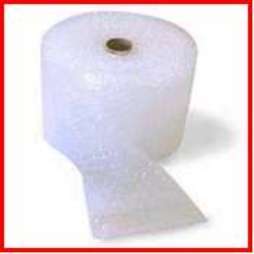
Bubble Wrap Rolls
All of us have received packages in the mail that are packed with bubble wrap or related packing supplies. Most of us will remove the bubble mailers, bubble envelopes, bubble wrap pouches, or bubble wrap envelopes and not rest until every bubble is popped.
Even as children we were fascinated by bubble wrap and similar packing supplies. We may have even used them in the classic egg-dropping experiment to protect an egg from cracking when it was dropped from a high building. The bubbles in bubble wrap provide a natural cushion to keep that which is fragile from breaking even when it is impacted by a huge blow.
Bubble wrap and related packing supplies come in many varieties such as bubble wrap rolls, boxed bubble wrap rolls, as well as the kind of bubble wrap that comes in large bundles. For those situations in which many fragile items need to be shipped, it is good to use bubble-out bags and heavy duty bubble bags. Electronic companies, who often ship fragile products that are vulnerable to ESD (Electro-static discharge), are dependent on anti-static bubble bags, anti-static bubble wrap rolls, anti-static boxed bubble wrap rolls, as well as anti-static large bubble wrap.
Except for packing peanuts, bubble wrap and related packing supplies are still the best way to pack something fragile. They are also one of the cheapest packing methods, provided you have a good bubble wrap supplier.

You must be logged in to post a comment.